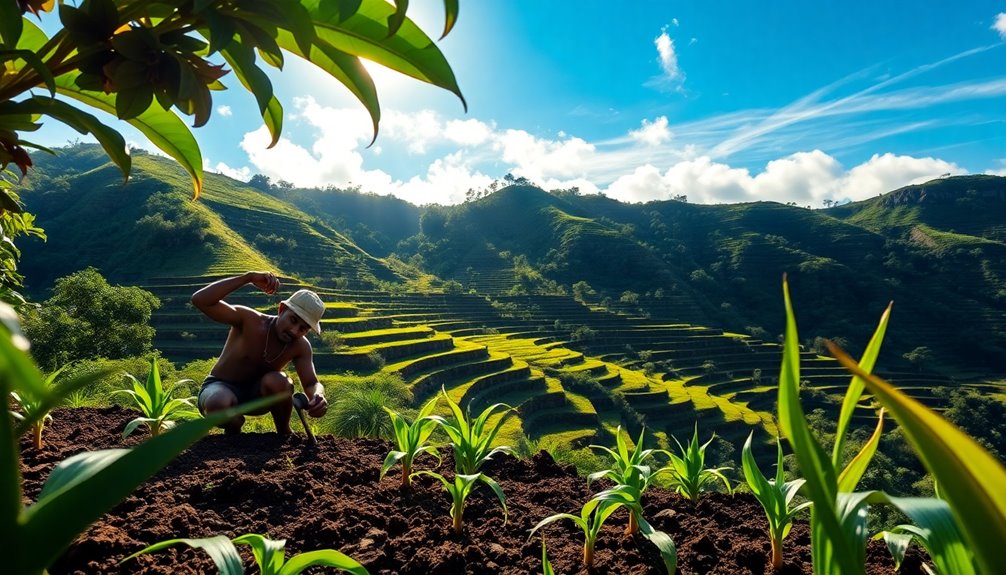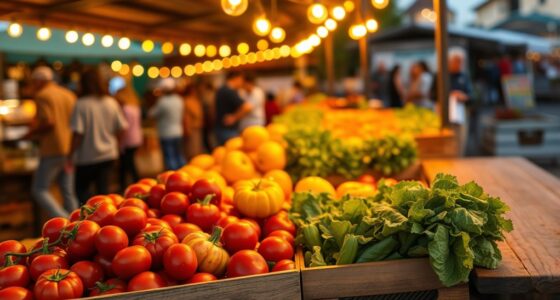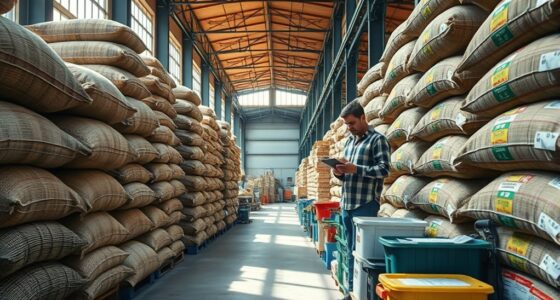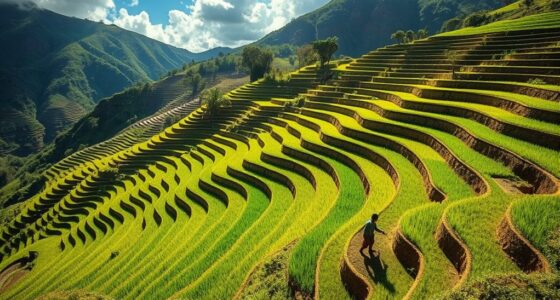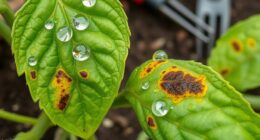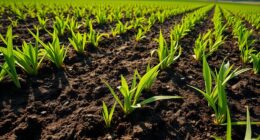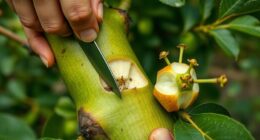The Mayans used several innovative farming methods, including slash-and-burn agriculture and terrace farming. With slash-and-burn, they cleared jungle areas, enriching the soil with nutrient-rich ash. Terrace farming involved cutting into hillsides to avoid soil erosion and maximize crop output. They also created raised beds in swampy regions for better drainage and moisture retention. These techniques guaranteed sustainable practices and crop diversity, allowing them to thrive in challenging environments. Their agricultural methods weren't just about survival; they were deeply intertwined with cultural and religious practices. There's so much more to uncover about their farming secrets!
Key Takeaways
- The Mayans employed slash and burn agriculture to clear land, enriching soil with nutrient-rich ash for crop growth.
- They utilized terrace farming to cultivate hilly terrains, minimizing soil erosion and maximizing arable land.
- Raised beds were created in swampy areas to enhance drainage, moisture retention, and support aquatic crop life.
- The practice of crop rotation maintained soil health and increased productivity by alternating crops to prevent nutrient depletion.
- Sustainable practices, such as fallow periods and diverse crop cultivation, ensured long-term agricultural success and food security for Mayan society.
Overview of Mayan Farming Techniques
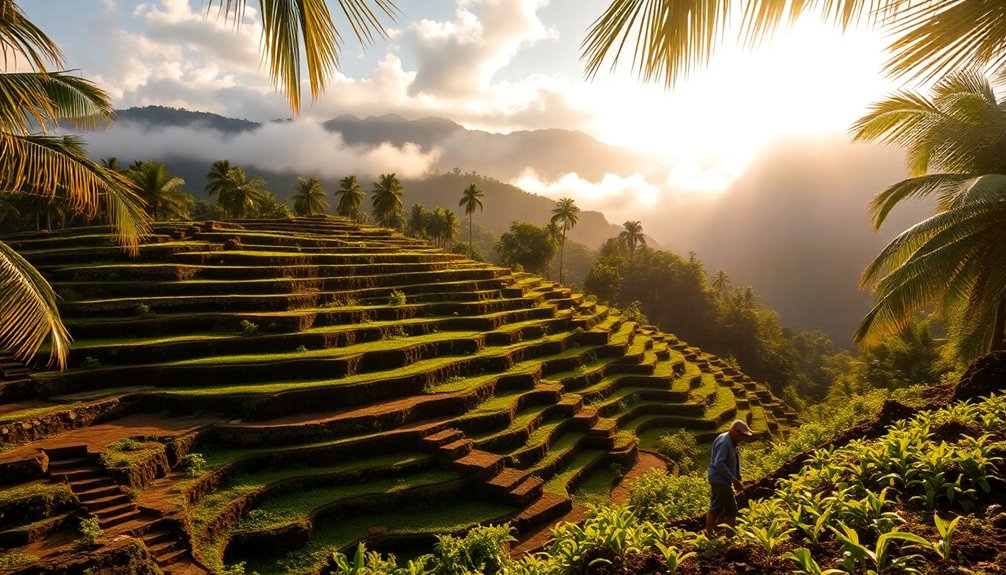
Utilizing a variety of innovative methods, the Mayans mastered farming techniques that suited their diverse environments.
As a Maya farmer, you'd likely employ slash and burn agriculture, clearing jungle land and enriching the soil with ash from burned vegetation. This method allowed for short-term crop production before you'd let the land fallow to recover.
In mountainous regions, you'd practice terrace farming, cutting fields into hillsides to reduce soil erosion while maximizing productivity.
Raised beds could also be an option, especially in swampy areas, where they'd enhance moisture retention and support both crops and aquatic life.
These techniques collectively showcased your adaptability and commitment to sustainable farming practices, ensuring long-term agricultural success.
Key Crops and Their Significance
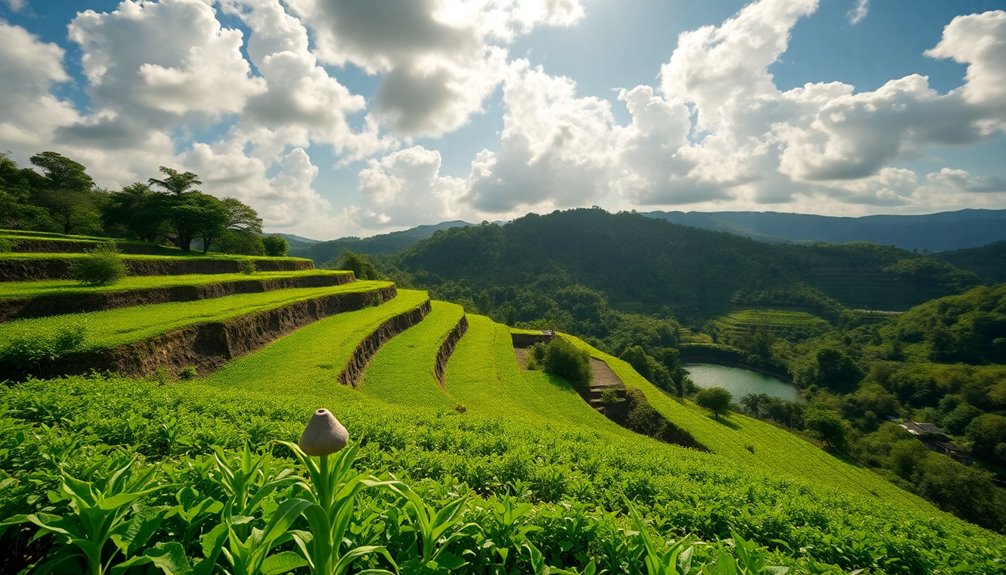
The Mayans cultivated a variety of key crops that played an essential role in their daily lives and culture. Among these, three crops stood out for their significance:
- Maize: This staple crop was the backbone of the Maya diet, used in tortillas and tamales, and held deep cultural and religious importance.
- Beans: Often intercropped with maize, beans provided crucial protein and improved soil fertility, showcasing the Mayans' sustainable practices.
- Squash: Growing alongside maize and beans, squash completed the "Three Sisters" method, maximizing land use and yield.
Additionally, cacao emerged as a luxury item, symbolizing wealth and tradition. The Mayans' agricultural techniques included crop rotation, which helped maintain soil health and enhance productivity.
Together, these crops not only sustained the Maya but also enriched their society, reinforcing their connection to the land and culture.
Sustainability Practices in Agriculture
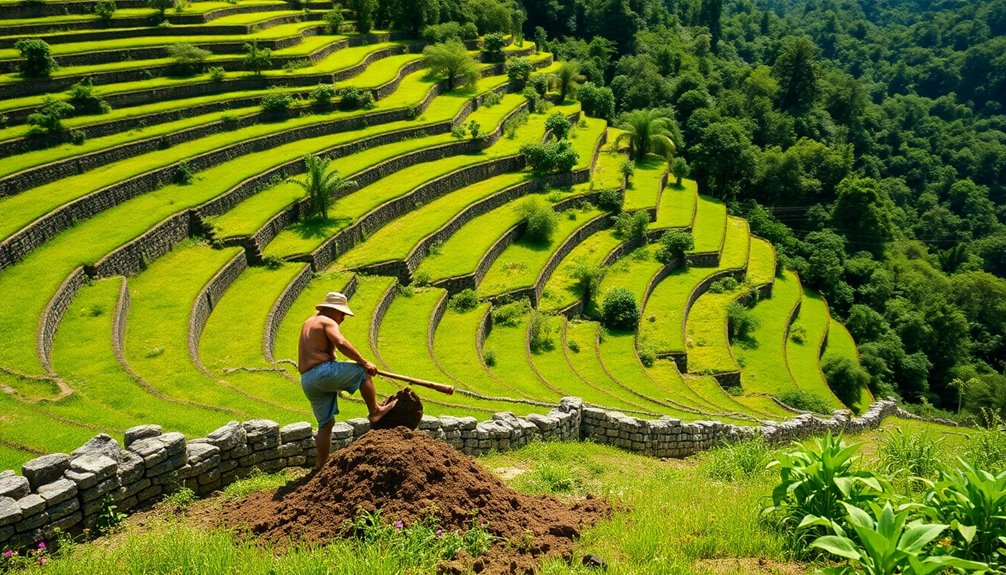
Amidst the lush landscapes of Mesoamerica, the Mayans mastered sustainable farming practices that allowed them to thrive for over a millennium.
They utilized techniques like terracing and raised bed farming, which not only enhanced productivity but also minimized soil erosion. By managing rainfall effectively with stone-faced garden terraces, they guaranteed efficient water retention and peak crop growth in hilly terrains.
The Mayans recognized the importance of crop diversity, growing various crops like maize, chili peppers, and squash, fostering food security and resilience against environmental changes.
Additionally, their careful forest management practices, including the conservation of wild trees and plants, guaranteed sustainable resource usage. This holistic approach allowed the Mayans to adapt to environmental challenges and maintain their ecosystems for centuries. Furthermore, their use of navigation tools to plan agricultural layouts contributed to the efficiency of their farming methods.
Innovations in Mayan Farming Methods
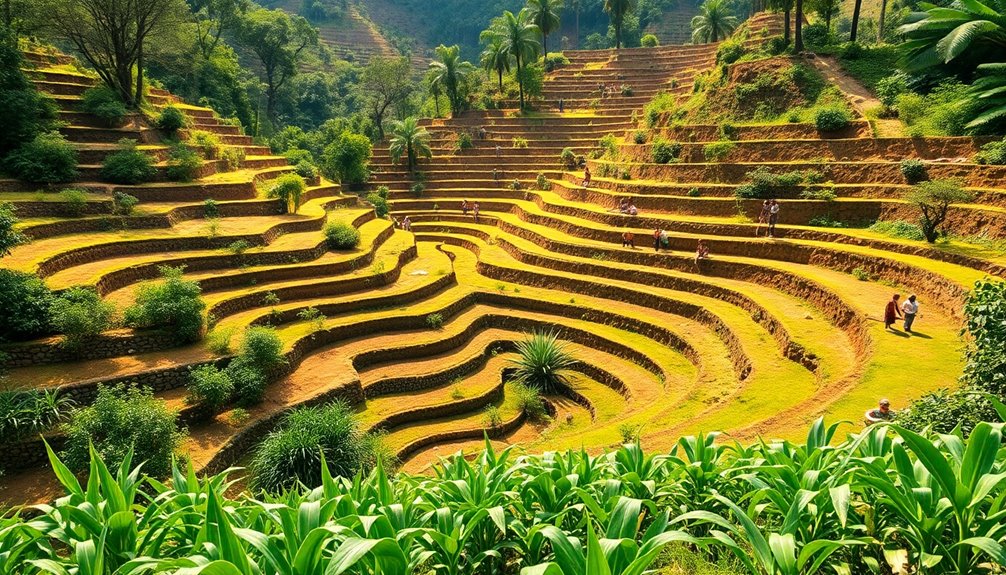
Building on their sustainable practices, the Mayans developed several innovative farming methods that allowed them to adapt to their diverse environments.
These methods were essential in their tropical climate and included:
- Raised Bed Farming: By creating elevated fields in swampy areas, the Maya used this technique to improve drainage and support aquatic life, enhancing crop growth.
- Terrace Farming: In mountainous regions, they carved small fields into hillsides, utilizing retaining walls to reduce soil erosion and maximize arable land for crops like maize.
- Slash-and-Burn Technique: This involved clearing dense jungle and burning trees to fertilize the soil with nutrient-rich ash, although the land required recovery afterward.
These innovations not only boosted agricultural productivity but also guaranteed food security across centuries.
Insights Into Mayan Agricultural Society
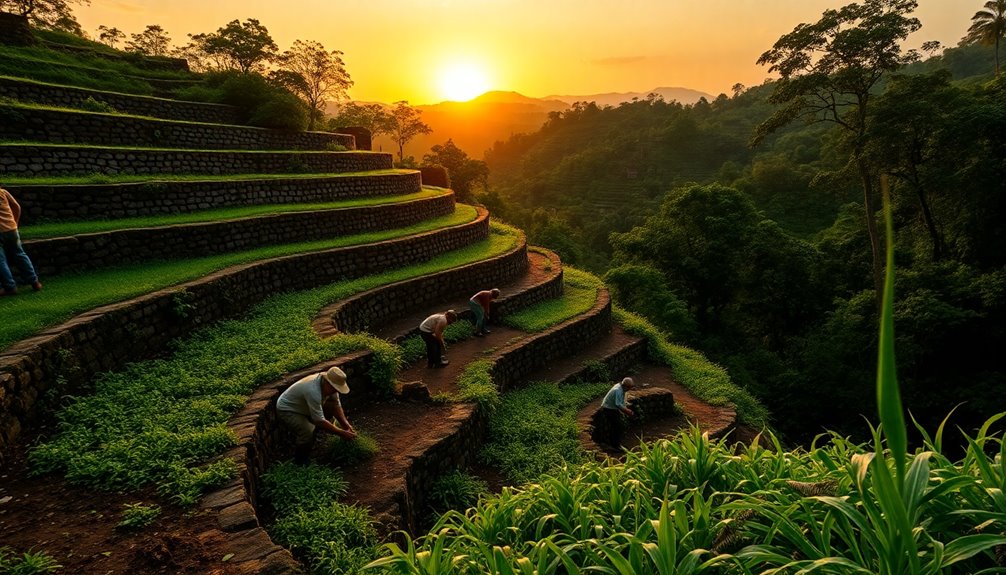
Throughout their history, Mayans cultivated a deep connection with their agricultural practices, which shaped their society and culture. The Maya civilization thrived on a foundation built around three staple crops: maize, beans, and squash. These crops not only served as food but also played crucial roles in their rituals and daily life.
| Farming Technique | Purpose | Benefits |
|---|---|---|
| Raised Bed Farming | Cultivating in swampy areas | Improved drainage and yield |
| Terrace Farming | Cultivating on hilly terrain | Reduced erosion and water runoff |
| Slash-and-Burn | Clearing land for cultivation | Enhanced soil fertility |
Frequently Asked Questions
What Farming Method Did the Mayans Use?
The Maya used several innovative farming methods to thrive in their diverse environments.
You'd find raised fields in swampy areas, maximizing moisture retention and allowing for multiple crops.
On hillsides, they employed terrace farming to prevent erosion and increase arable land.
Additionally, they practiced slash-and-burn agriculture, enriching the soil with ash, though it needed fallow periods for recovery.
These techniques showcase their adaptability and sophistication in ancient agricultural practices.
Which Farming Method Was Not Used by the Mayas?
You might find it interesting that the Mayans didn't use commercial monoculture farming. Instead of focusing on a single crop, they practiced polyculture, growing multiple crops like maize, beans, and squash together.
They also avoided modern techniques like synthetic fertilizers and pesticides, opting for traditional methods. By employing shifting cultivation and allowing land to recover, they maintained a sustainable approach, prioritizing environmental health over maximum yield.
This guaranteed a balanced agricultural system.
What Techniques Did the Mayans Use?
The Mayans employed several innovative techniques to optimize their agricultural practices.
You'd notice they used raised bed farming to enhance drainage in swampy areas and terrace farming in the mountains to prevent erosion.
They also practiced slash-and-burn to enrich the soil and rotational farming to maintain soil fertility.
Finally, forest gardening allowed them to grow diverse plants, boosting food security while maximizing their resources effectively.
Each method shows their deep understanding of the environment.
Conclusion
In summary, the Mayans mastered multifaceted farming methods that melded sustainability and innovation. Their cultivation techniques not only guaranteed growth but also fostered a flourishing food culture. By understanding their secrets, you gain insight into a society that thrived through thoughtful practices and a profound connection to the land. Embracing these ancient approaches can inspire modern agriculture, helping us harness harmonious habits that respect our environment and secure future food security.

